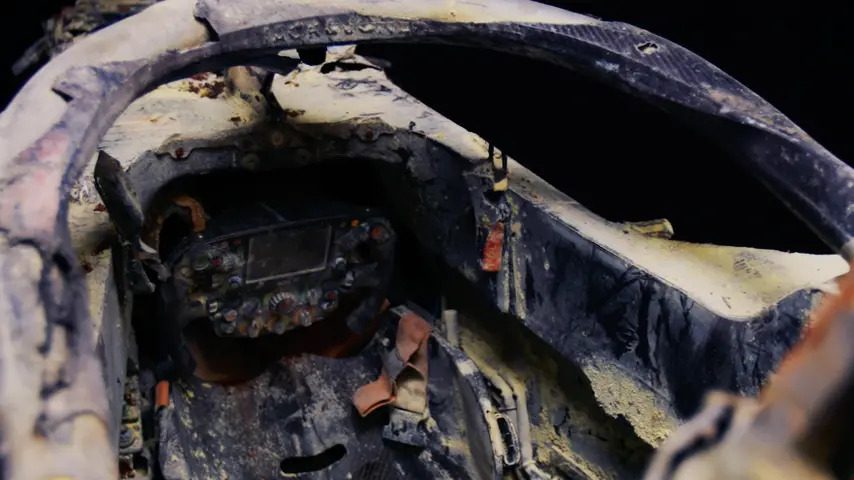The charred remains of Romain Grosjean’s Haas F1 car will be put on display for the first time at the Formula 1 Exhibition in Madrid, Spain.
If you tuned into the opening lap of the 2020 Bahrain Grand Prix, its likely you witnessed one of modern motorsports’ major miracles when the Swiss-French driver survived a fiery collision with the wall at nearly 200km/h.
Two and a half years after the incident, what is left of the car will be put on display for the public to see.
The car has been kept under wraps since it was split in half upon impact with a wall, engulfing the car in flames with Grosjean still inside. It wasn’t until nearly half a minute after the accident when he escaped the wreckage.

A purpose-built room dedicated to ‘Survival’ in the sport will house the chassis for attendees to view along with a video installation showing unseen footage of the crash.
If you aren’t able to see it in person, the accompanying images of Grosjean’s car are a testament to modern safety technology not only in Formula 1 but motorsport as a whole.
Even with such a high speed impact, the VF-20’s halo (the vehicle structure protecting the driver’s head) seems to be unscathed apart from fire damage and parts missing part from its carbon fibre cover.
As for the interior, its hard to imagine what went through Grosjean’s mind as he sat there almost helpless. However, he recently recounted the harrowing experience in detail.

“From my point of view, it was a big accident but I didn’t realise the impact or how violent it was from the outside,” Grosjean said to Formula 1.
“It was only the next day when I asked someone to show me what it looked like that I realised. My wife was actually watching that race with my dad and my kids. They will remember that moment their entire life. They were just spectators waiting to hear something… waiting to see something from Bahrain.
“I had to break the headrest, punching it with my helmet and then I eventually managed to get my helmet through and stand up in the seat. I realised my left foot was stuck into the chassis and I pulled as hard as I could on my left leg. My shoe stayed in the chassis but my foot came loose so I was free to exit the car.
“It was 120 kilos of fuel plus the battery – both were on fire. Dr Ian Roberts, Alan [van der Merwe] from the medical car and one fireman were trying to open a gap in the fire to help me get out. I believe that helped me at least to get a vision of where I had to go and where the exit was.
“The survival cell is there for you in case of a huge impact. I was intact inside the shell. The chassis is still in one piece, the halo is there and apart from the damage and burn it is still as it should be. I guess that saved my life.”
Those who want to see the wreckage of Grosjean’s F1 car can do so at the Formula 1 Exhibition in Madrid, Spain, when it opens on March 24, 2023.
Header Image: Formula 1 Exhibition

















